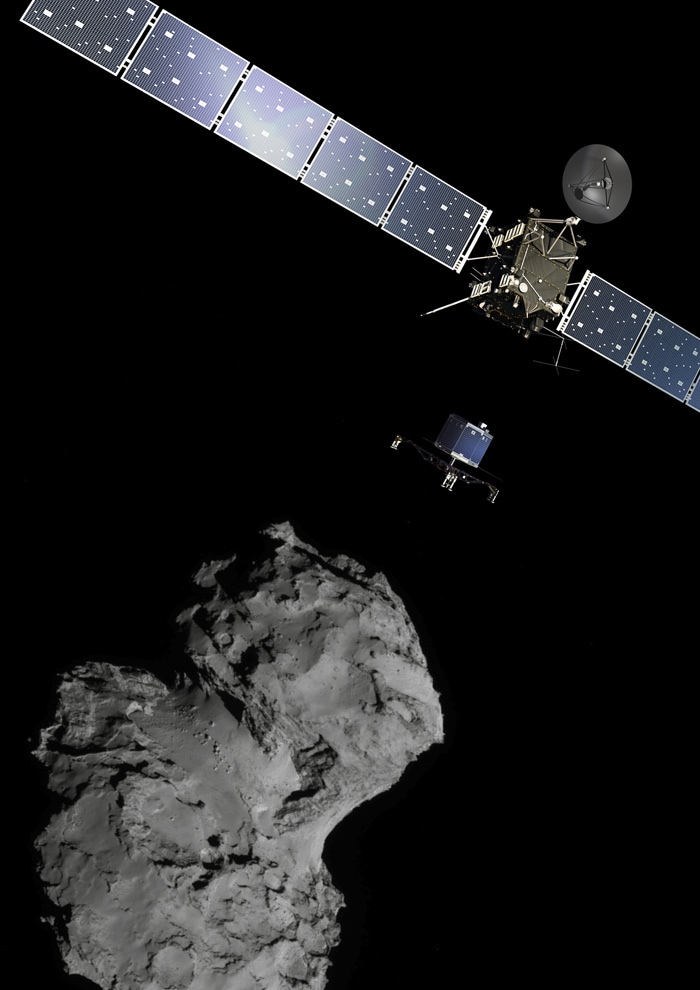On Wednesday, the European Space Agency’s lander, Philae, made history by successfully landing on the surface of a speeding comet, 67P/Churymov-Gerasimenko — the first time anyone has landed a spacecraft on a comet.
The touchdown followed a tense 7-hour countdown that began when the Philae lander dropped from the agency’s Rosetta space probe toward the comet as both hurtled through space at 66,000 kph.
Rosetta who?
Launched in March 2004, Rosetta was reactivated after a record 957 days in hibernation.
Composed of an orbiter and lander, Rosetta’s objectives are to study comet 67P in unprecedented detail, using its 21 scientific instruments to study how the comet reacts to a close encounter with the sun.
The resulting data will help scientists learn more about the origin and evolution of our solar system and the role comets may have played in seeding Earth with water, and perhaps even life.
The comet 67P
Rosetta made history in August when it entered 67P’s orbit.
Surface temperatures go down to minus 70 degrees C and the terrain is uneven, making for a rough landing.
Landing Philae
The landing site – previously known as “Site J” is named Agilkia.
As it approached the 67P, Philae fired a set of harpoons and tethered itself to the frozen surface.
The mission
The first phase will last two-and-a-half days where Philae will be on primary battery power. In phase two, which will use solar power for approximately three months.
Its goal is to stick with the comet until it passes the sun in August 2015.
The famous selfies
The Comet Infrared and Visible Analyser (CIVA) on Philae is comprised of seven cameras that are capable of taking 360 degree photos of the comet’s landscape once the spacecraft lands. On September 7, Rosetta took a selfie with the CIVA camera from a distance of 50 km from the comet.
The numbers
100 kg — weight of probe
10 feet long — length of Rosetta
2 wing-like solar panels
6 billion km — distance travelled to reach comet
10 years — time taken
$1.68 bn — cost of the Rosetta mission
75% — scientists’ estimate of chance of a successful landing
The comet itself is about 2.5 miles (4km) long and orbits the sun every six-and-a-half years.


